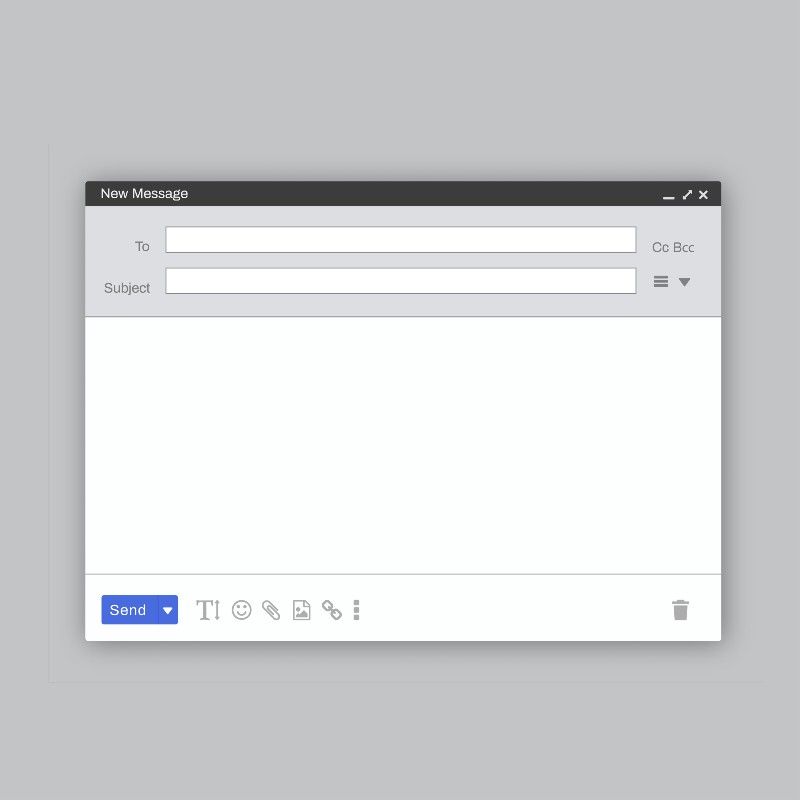What Is A/B Testing in Email Marketing and How Does It Work?
Email marketing is among the best digital marketing channels to promote your business, but creating a successful campaign can get challenging. So what is A/B testing, and can it help you maximize email marketing campaigns?
Sure, you have heard many marketers speak about the various benefits of email marketing. It’s still one of the most effective ways to build your brand, boost website traffic, and increase conversions even in 2022. Yet, it requires much more work in terms of effort and energy than social media ads, so you probably want to be assured your email marketing campaigns drive desired results and you aren’t wasting your resources.
A/B testing is how you can determine whether your email marketing campaigns will help you achieve desired goals and if you need to make changes to maximize their results. It allows you to test different campaign elements and create more effective ones based on your results.
What is A/B Testing?
A/B testing, also known as split-run testing, is a marketing technique that divides your subscribers into two versions and sends different campaign variations to each of them.
The idea of split testing is to determine which campaign variation drives the best results so that you can make changes to the original campaign accordingly.
In A/B testing, you can send multiple subject lines, compare open rates, or send different templates and compare conversions to understand better what works best for your target audience so you can maximize your future campaigns.
How to Get Started?
To begin A/B testing, you’ll need an automated email marketing software like Klaviyo, Campaign Monitor, or MailChimp. These tools make it simple and easy to test your campaigns by creating different variations and tracking their results using metrics such as open and conversion rates.
The starting point of A/B testing is creating two variations of your subject line or email content. You should create two versions of the same email and send them to two groups of subscribers simultaneously.
After sending your A/B test campaign, it’s crucial to monitor your open and click-through rates to see how your audience responds to each email variation. These metrics indicate which version drives better results.
What to Test?
There’s no one unique formula to creating an A/B test campaign, and as long as you’re making two variations of the same email that have the same idea but communicate it differently, you are on the right track.
Still, A/B testing must have a clear objective to help you better understand what works and what doesn’t. It means asking yourself the right questions, including:
Why Are You Testing?
Are your open rates dying? Or perhaps there’s no traffic to your website from email marketing campaigns? Do you want to know which subject lines generate more open rates or what to include in call-to-action drives more clicks?
Whatever the reason is for A/B testing, you might first identify it to determine which aspects to focus on in your A/B test. Regardless of your objective for A/B testing, you should first identify it to know what to test.
What Are You testing?
Whatever your objective, you have two metrics to analyze to determine the success of your campaigns and which version of them works better. These are:
Open rate: This metric determines how many of your recipients opened your email.
Click-Through Rate: the metric measures how many email recipients took action after reading your email, whether it’s visiting your website, reading your blog, downloading your whitepaper, or clicking any link you included in your CTA.
What Do You Want to Test?
Which aspect of the campaign you want to experiment with will depend on whether you are testing open rates or click-through rates. If it’s open rates, you probably want to begin with subject lines. If it’s a click-through rate, you should make different variations of your email content.
Although it might be tempting to test more than one aspect of your campaign at a time, it’s crucial to focus only on one at a time.
Testing more than one variable will make it impossible to understand which changes affected results or consider for future campaigns. For example, it means that if you are testing a subject line and email content simultaneously, it’ll be hard to know which of these affected conversion rates. Besides, it’s crucial to send different variations simultaneously, so you know for sure it’s not the timing that affected results, but the content.
Email marketing tools allow you to test nearly any aspect of your campaigns to maximize their results in the future. If you are searching for ideas you’re A/B testing, here are some to help:
Subject lines
The subject line is the first aspect your email recipient sees in their inbox, significantly affecting the open rates. More than 45% of your subscribers will decide to open emails based entirely on the subject lines; therefore, it’s one of the most vital elements of your campaign.
Personalized vs. General Subject lines
The first aspect you can test is whether personalized or general subject lines generate more open rates among your target audience.
A general subject line looks like this:
“Are you still searching for the best face wash?”
A personalized subject line looks like this:
“Mary, are you still searching for the best face wash?”
Product Description
Another way you can test subject lines is to include product descriptions in the subject line to generate more open rates. For example:
“Shop for our new arrival!” or “Shop for our new arrival – a medicated face wash to fight acne!”
Question vs. Statements
Does a question generate more opens than a statement?
For example, two variations of subject lines you can use for abandoned cart emails:
“Hey, you forgot something.” or “Hey, did you forget something?”
The Length
Are longer or shorter subject lines more effective for your campaign? The length is another aspect you can test to see whether short or long subject lines drive better results.
“Find Your New Home” or “Don’t Miss This Month’s Offers: find your new home with a special deal!”
Word order
The order you use in subject lines will make a difference for open rates, even if you use the exact words.
For example:
“Receive 50% off your next purchase using this promo code” or “Use this promo code to receive 50% off your next purchase.”
Content:
If your email includes content like a blog post, video, or newsletter, you can test different pieces and see which one resonates with your audience.
Visuals:
Visuals in your emails play a crucial role in conversions, so it’s another aspect you can focus on in A/B testing. You can do this by sending emails with and without visuals or using different visuals, such as images in one version and visual graphs in another. You can also test different forms of content such as images vs. gifs or videos and experiment with different styles.
Copy:
Unquestionably, the text of your email is one of the most crucial aspects of your email marketing campaigns. It’s not only about a well-written, compelling text, but its length, style, tone, and most importantly, a clear call to action. Not sure which version better resonates with your audience? A/B testing is an excellent way to find out.
What’s Next?
Once you see the results of A/B testing, you can better understand which version of your campaign drove better results. For example, if you offered a discount coupon and people in the A version used it more times than in B, you know which version performed better. The knowledge you gain from testing will help you build successful campaigns in the future and learn more about your audience’s preferences.
In Conclusion
Regardless of what kind of business you run, A/B testing can significantly improve the results of your email marketing campaigns.
Improved conversions, better open rates, and increased revenue are the primary outcomes of A/B testing. A/B testing is a worthwhile and straightforward marketing technique that helps create successful email marketing campaigns. For testing, marketing automation tools you can use include Klaviyo, MailChimp, and Campaign Monitor.







